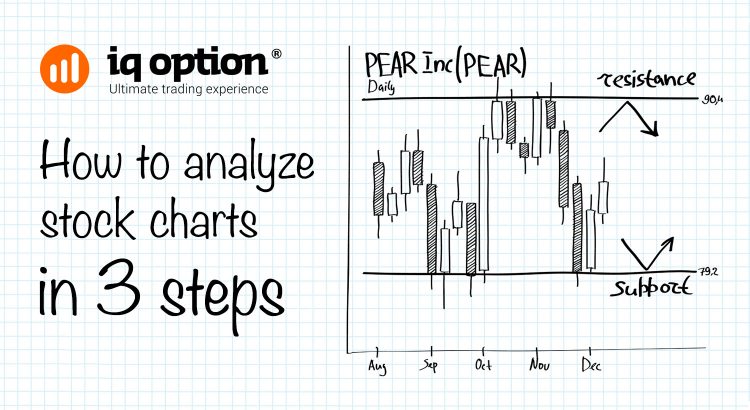Difference Between Gross, Operating and Net Profit with Similarities and Comparison Chart
Contents
Net income is the result of all costs, including interest expense for outstanding debt, taxes, and any one-off items, such as the sale of an asset or division. Net income is important because it shows a company’s profit for the period when taking into account all aspects of the business. In other words, net income includes revenue, COGS, overhead expenses and operating expenses, operating profit, debt costs, taxes, and any other financial line item that adds or subtracts to the income of the company. Investors may often hear or read net income described as earnings, which are synonymous with each other.
When a company generates revenue, it needs to eliminate every single expense from it in order to know the actual profitability of the company. When you deduct every single expense from the total revenue of the company, the money that is left is the net income or the profit that the company has earned. The net profit is important for shareholders since this is the amount that is left over for distribution after all other expenses have been deducted. A company’s net profit appears in the income statement and is a good indicator of how profitable the company has been over the past year.
Accounting PeriodAccounting Period refers to the period in which all financial transactions are recorded and financial statements are prepared. Gross Profit is the profit remained with the company after reducing all direct costs like material, labor, overhead from Net Sales. The cost of goods sold includes all those costs which are spent in the production and distribution of the product. It symbolizes that how effectively and efficiently the company allocated its resources so that the best possible result is achieved at a very low cost. EBIDA, nonetheless, doesn’t make the assumption that the tax expense can be lowered by way of the interest expense and, therefore, doesn’t add it back to web revenue. Criticism of EBIDA EBIDA as an earnings measure is very not often calculated by corporations and analysts.
Difference Between Gross Profits, Net Income, And Operating Profit
Please note that some companies list SG&A within operating expenses while others separate it out as its own line item. Net profit and operating profit are two important components in the study of accounting. Both sound very similar to each other and are, therefore, consistently confused to mean the same thing. One of the main similarities between the two is that they both appear in a firm’s financial statements and are both equally important when making business decisions. However, there are a number of differences between the two terms, how they are calculated and interpreted.
The operating revenue is $three,000,000, which incorporates the revenue, cost of goods offered, and basic and administrative expenses. Operating bills embrace lease, utilities, payroll, worker advantages, and insurance coverage premiums. Operating profit contains all operating prices except interest on debt and the corporate’s taxes.
Companies will have varying types of direct costs depending on their business. Companies that are involved in the production and manufacturing of goods will use the cost of goods sold measure while service companies may have a more generalized notation. The management uses all the three figures separately, and all of the three figures serve a different purpose, as stated earlier. In addition to COGS, this includes fixed-cost expenses corresponding to lease and insurance, variable expenses, similar to transport and freight, payroll and utilities, as well as amortization and depreciation of belongings.
Assessing pre-tax profit is important as a result of “it eliminates any distortion attributable to taxes,” based on USA Today’s Matt Krantz. Operational profit doesn’t count revenue or losses exterior of an organization’s “normal domain,” in accordance with monetary useful resource Datamatrix-UK (datamatrix-uk.com). In accounting and finance, earnings earlier than interest and taxes is a measure of a firm’s profit that features all incomes and expenses (operating and non-operating) besides interest bills and earnings tax expenses. JC Penney earned solely $3 million in operating revenue after earning $2.67 billion in income.
- 24 years old Early Childhood (Pre-Primary School) Teacher Charlie from Cold Lake, has several hobbies and interests including music-keyboard, forex, investment, bitcoin, cryptocurrency and butterfly watching.
- In general, it is better to have a higher gross profit margin number as it represents the total gross profit per dollar of revenue.
- If the interest expense was $110 million for the period, the company would record a $10 million loss in net income despite producing $100 million in operating profit.
- Net profit is affected by a company’s financial decisions, such as borrowing money or paying dividends.
- The disparity between the numbers exhibits the importance of utilizing multiple monetary metrics in analyzing the profitability of a company.
Once you carry out this calculation, you can use the gross profit rate to estimate the gross profit you would make with an increase in sales. How do you know which costs are to be considered for calculating the cost of goods sold? Remember that the critical issue is whether the cost can be directly attributable to the production of goods. Helpful in control over the excess operating costs.Helpful in knowing the performance of the company in a financial year. Gross profit is the profit a company makes after deducting the costs of making and selling its products, or the costs of providing its services. Economic profit is the difference between the revenue received from the sale of an output and the costs of all inputs, including opportunity costs.
Best Business Loans For Bad Credit
Operating earnings is a company’s profit after deducting working bills that are the prices of working the day-to-day operations. Operating earnings, which is synonymous with operating profit, allows analysts and traders to drill down to see a company’s working efficiency by stripping out curiosity and taxes. Operating revenue is a company’s profit after subtracting operating expenses and the opposite costs of running the enterprise from whole income. Operating earnings reveals how a lot revenue a company generates from its operations alone without curiosity or tax bills. Conversely, operating profit alludes to the profit attained after deducing cost of production and operating expenses from the net sales.
Understanding these different variables and their effects on margin analysis can be important for investors when analyzing the worthiness of corporate investment. All Cash FlowsCash Flow is the amount of cash or cash equivalent generated & consumed by a Company over a given period. It proves to be a prerequisite for analyzing the business’s strength, profitability, & scope for betterment.
Operating profits can be calculated by deducting all the operating expenses from the gross profits such as depreciation and fixed costs. Finally, the net income of a company is the actual representation of its profits and financial performance. All the three types of profits are necessary for different types of assessments in the company and in calculating the overall expense to revenue ratio. Operating Profit is the profit that is earned from the regular activities of the business or of the enterprise.
The cushion of money you depend on to run your daily operations smoothly no longer exists. Remember that when calculating operating profit, the interest cost incurred on loans is not to be considered. The Operating profit doesn’t include any profits earned from investments and interests. • Net profit and operating profit are two important components in the study of accounting. By analyzing how the gross, operating, and net profit margins compare to each other, industry analysts can get a clear picture of a company’s operating strengths and weaknesses. Each profit margin measure shows the amount of profit per dollar of a company’s revenue.

Revenue is the aggregate of money earned by a firm within a specific financial period. As a result, all profitability metrics on an income statement should be analyzed, including gross profit, operating profit, and net income to determine where a company is earning its profits or where its losing money. Profits can be defined as the part of the revenue generated by the company that is left after all the expenses and debts have been paid.
Companies may also raise capital through debt which can decrease their net profit margin when interest payments rise. Overhead costs, such as sales, general and administrative expenses https://1investing.in/ (SG&A) are also deducted from revenue and reflected in operating profit. Overhead costs are not directly tied to production, such as the expenses for running the corporate office.
In general, it is better to have a higher gross profit margin number as it represents the total gross profit per dollar of revenue. Overall, margin analysis metrics measure the efficiency of a firm by comparing profits against costs at three different spots on an income statement. Gross profit, operating profit, and net profit margins are important measures for analyzing an income statement.
What is the formula for operating profit?
Some of the most common forms of profit that can be found in financial statements are gross profit, net profit, operating profit, etc. All of them are calculated for different reasons, and each plays a diverse role in their journey through the accounting cycle. The EBIDA measure removes the idea that the cash paid in taxes could be used to pay down debt. However, EBIDA just isn’t often utilized by analysts, who as a substitute go for either EBITDA or EBIT. Understanding Earnings Before Interest, Depreciation and Amortization There are varied methods to calculate EBIDA, similar to including interest, depreciation, and amortization to net earnings. Another different method to calculate EBIDA is to add depreciation and amortization to earnings earlier than interest and taxes after which subtract taxes.

EBIDA is said to be more conservative compared to its EBITDA counterpart, as the previous is usually at all times decrease. Consequently, prospective investors and business owners should be well-aware of the implications of and differences between both these metrics to judge a company’s performance more effectively. Gross profit and net profit of a firm are closely related to one another and help business owners to prepare their annual income statement. Net income is important because it includes all revenues and costs and is used to calculate earnings per share.
Operating Margin
Net profit is the amount that is received by the company’s shareholders once all expenses and income have been accounted for. Net profit is calculated by including extraordinary expenses/income, reducing interest costs, depreciation, bring out the difference between operating profit and net profit and taxes from operating income. This means that net profit is derived from operating profit, except for the fact that a few items that are not included in operating profit are included when arriving at the net profit.
Always start with whole income or total sales and subtract working bills, together with the price of items sold. You might take out one-time or extraordinary gadgets, such as the revenue from the sale of an asset or the price of a lawsuit, as these don’t relate to the enterprise’ core operations. Earnings earlier than curiosity and taxes measures the revenue an organization generates from its operations making it synonymous with operating revenue. By ignoring taxes and interest expense, EBIT focuses solely on an organization’s ability to generate earnings from operations, ignoring variables such as the tax burden and capital construction. Operating profit is obtained by subtracting operating expenses from gross profit.
